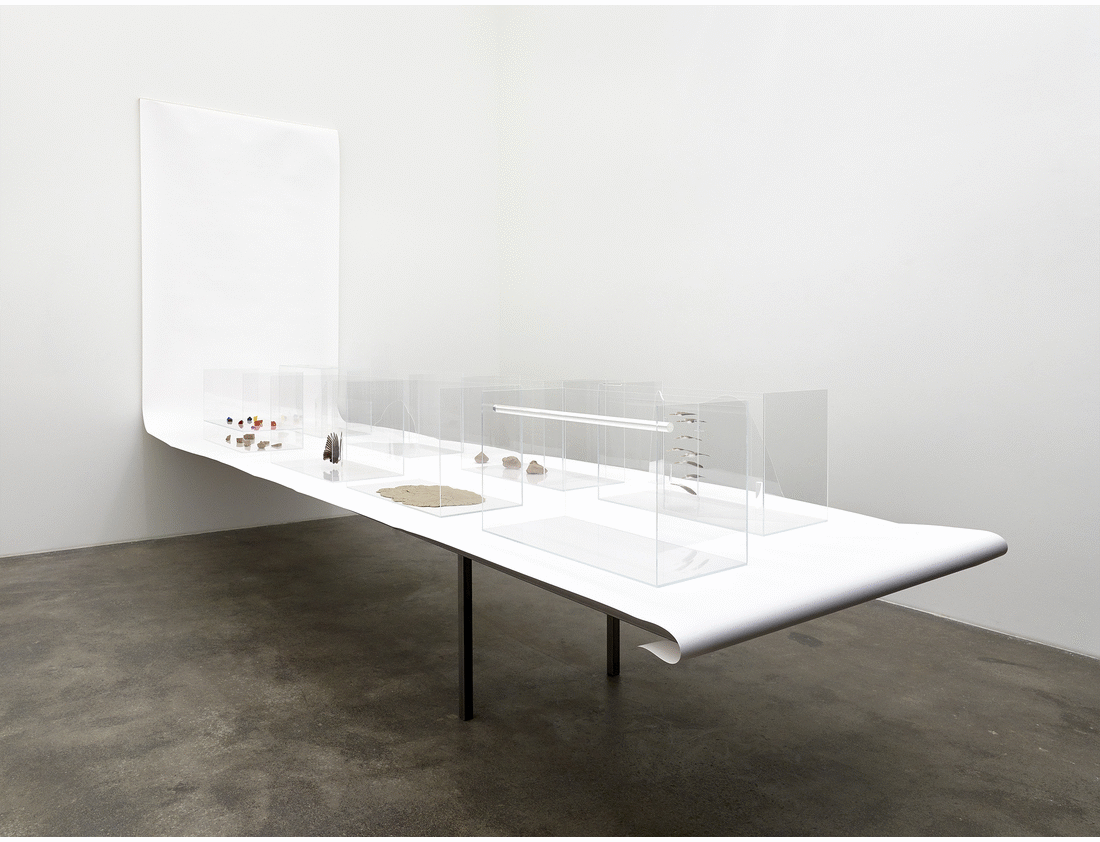Interview with Charlotte Brüel from her studio
Charlotte Brüel
Invisible Sculptures
26.08 - 24.10.2020
We are pleased to present a solo exhibition by the Danish visual artist Charlotte Brüel for CHART 2020. The exhibition emerged out of a double fascination with the artist’s work and life, also reflecting the focus of the fair on women’s position in art. Parallel with the artist’s works, this publication presents excerpts from her work journal, providing historical anchorage for the story of Charlotte Brüel’s artistry. Her works recall the position assumed by the artist herself on the Danish art scene; in spite of continuous exhibition activities and several initiatives to set up alternatives to the traditional institutions, her artistic work has remained largely hidden from the public eye.
In Brüel’s latest works, the contradiction between nature and human processing is evident. The industrial acrylic glass displays seem to enclose a carefully selected array of sculptural studies in clay along with a suspended arrangement of found bird feathers. The acrylic glass cases, made of synthetic plastic, screen their organic contents like indestructible greenhouses – with the exception of a single display case that seems to be missing a large piece in one corner. Using a simple artifice, Brüel emphasises the fact that the minimalist displays are inextricably linked to the individual content of the sculptures.
The collective title of the works, Usynlige skulpturer (Invisible Sculptures), also appears to support the transparency of the glass as a material quality. The severed bird wings on display in one of the terrarium-like acrylic glass cases are a universal symbol of an ultimate sense of freedom and, at the same time, of the deprivation of that freedom. For the viewer who, from his bird’s eye view, looks down at the cut-off wings, and thus also at the absence of a wingless bird, this is an absurd thought.
However, the similarity between Brüel’s works and absurdism as an artistic trend is not entirely trivial. It was precisely in the years after 1945 – Brüel’s year of birth – when Europe was undergoing another process of political change that the absurd emerged as a theatrical trend. The theatre of the absurd rested on the same foundations as existentialism, and up through the 1950s-1960s it provided a counterpoint to realism as a dramaturgical depiction of reality. Observing Charlotte Brüel’s various acrylic glass showcases with their minimalist but symbol-laden contents, it is tempting to think of them as diminished theatrical scenes with carefully crafted props. The theatre of the absurd made use of an anti-naturalist, stylized and symbolic aesthetic. Albert Camus writes in Le Mythe de Sisyphe (The Myth of Sisyphus) that the absurd is a ‘schism’ born from the collision between two objects. Something unusual must be juxtaposed with something quite ordinary in order for its absurdity to become apparent.
It is, moreover, a comparative gaze that is activated when one studies the contents of Brüel’s exhibited showcases. And it is the gaze, above all, and the nonverbal, sensual experience that, according to the artist, ensures the simple complexity of the works. It is as if Brüel’s sculptures never quite stop. On the contrary, it is like witnessing tableaux materialising in front of one’s eyes. Her sculptures appear at once open, precise and unfinished in terms of their narrative. In Charlotte Brüel’s practice, life and work are connected and born of each other. It is a life’s work that invites the audience to take their time and enter the dialogue.




